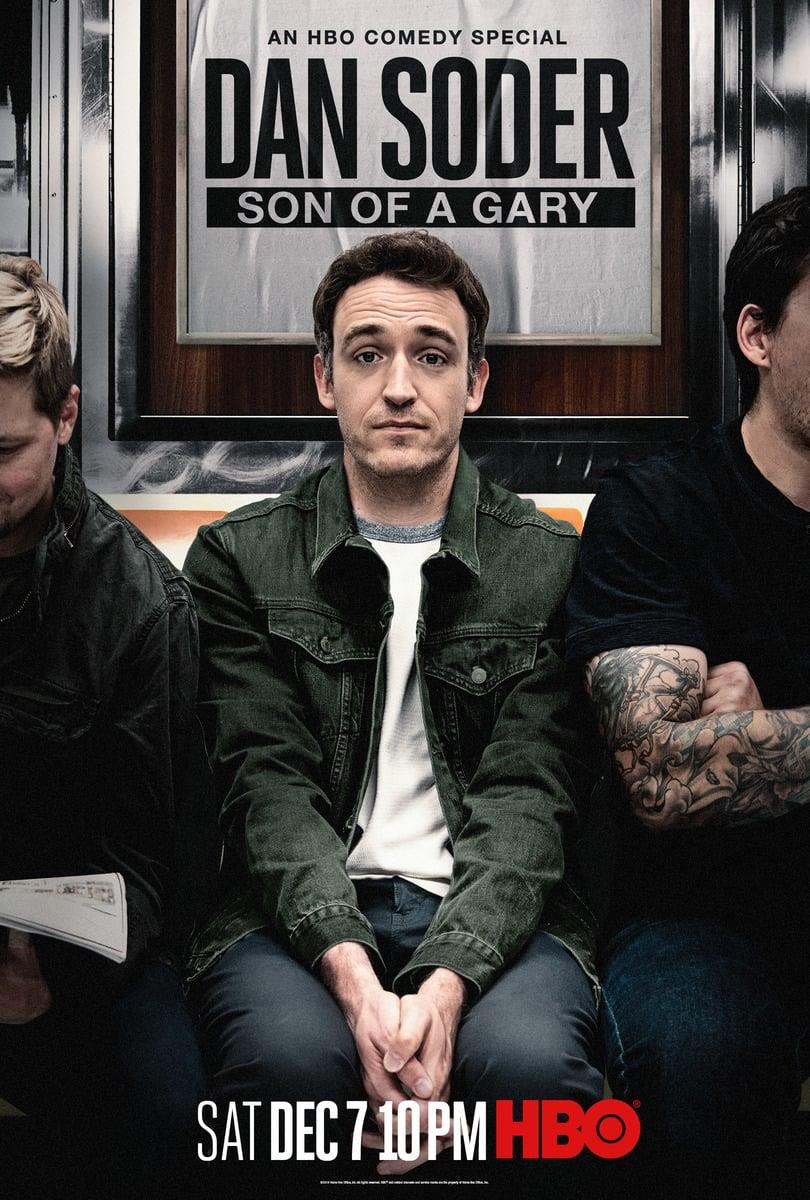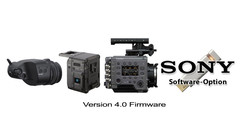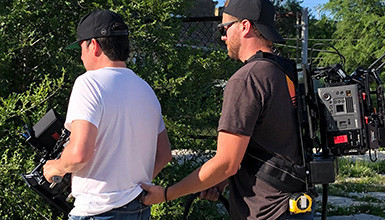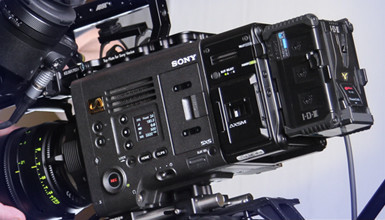
What was your overall cinematographic plan for this project?
I've shot a lot of different styles of comedy specials, but with Dan's set and the way he presented himself, this needed to feel more raw and natural to the space. I also didn't want an overproduced and overly lit special. We lit the existing architecture of the stage [at The Bowery Ballroom in New York City] and added a spotlight as if Dan just showed up to the club, and it was the preexisting work light.
We pushed the VENICE on the high ISO to add some grain. I did on-set color with my DIT on the day, and we developed a LUT that we ended up using as our finishing LUT. We created a much smoother, low contrast look that contributed to the raw feeling. If it got too contrasty, it would feel too polished. The combination of going high ISO on the VENICE and shooting Optimo 12:1 24-290mm zooms wide open, which diffused the lenses a little bit, made it all work.
Was this your first major production working with VENICE?
This was the second show I've done with VENICE. The first was the Jeff Garland special for Netflix. We liked the color and the latitude we got out of the high ISO range, so we decided to go again.
How did you determine how many cameras you'd need to cover the show?
From years of shooting stand-up specials, you have a minimum number, and I tend to reposition cameras between shows because the comedians, especially someone like Dan who's been workshopping his routine for a while, are very consistent in what they do. That gives you the ability to flip lenses around and change camera positions between different shows to make it feel like more cameras.
Four of the cameras were operated, and one was a lock-off on the stage behind Dan. We shot two performances on the same day, and two of the camera positions on the first show moved to new positions on show two. Once everything was edited into a single performance, it looked like we had seven cameras.
How much additional lighting did you do?
We first assessed where the existing practicals were, and then we augmented them with Astera LED tubes. We added about 32 four-foot tubes for onstage, back in the corners, and around the room. I had full control over all of the tubes to match both color and intensity and could paint the room the way I wanted it to look. The tubes acted as if they were work lights. Finally, we brought in an older tungsten spotlight to give Dan a richer skin tone.
During the performance, were you directing the camera operators?
I will coach them before the show, walking through what I like and don't like based off of the production design and the way the comedian will work the stage. I'll often give them a one, two, and three mark depending on different lens lengths and compositions. Then I dance all the camera operators live through the show, so no one is getting the same shot, and we build up a set of looks for the final edit.
I also trust the people I hire and tend to utilize the same operators to do all my shows in different cities. These are people who have backgrounds in movies and TV. Their eye, tempo, and decision-making are different. When you put the right people in the right place, they tend to make the right decisions.
My visual style of comedy specials is that the zoom should never stop. It allows movement through the frame and not side to side. I tend to stay away from dolly and slider shots. They just don't read when you're shooting one person on a stage in one place that doesn't move.
I sat in the back of the house with five Sony OLED color grade monitors. Each lens can have different color characteristics, so my DIT live-graded each to match. We approached it from a commercial advertising/film perspective – we got the best content we could from each camera, knowing we weren't duplicating anything.
Does each camera unit have a single operator, or were there additional crew?
A couple of years ago, I began implementing an entire camera department into my workflow and stopped running it like a typical live show. Each camera has a first AC, an operator, and then depending on how big the camera package is, we'll have a minimum of two second ACs and a loader. We'll have a DIT as well, so the teams can get relatively large. It's the only way to achieve the kind of results I'm trying to get.
Were you able to capture the entire show without changing media?
Over the years, we've certainly had issues with media not being able to do an entire show. So, you're doing choreographed camera reloads and offsetting each camera so that only one goes down at a time. Shooting X-OCN ST on the VENICE with the 1TB AXS memory cards, we were able to get through the full 90-minute show without stopping to reload.
Can you describe your RAW workflow?
We applied a base LUT and made a CDL adjustment to the base LUT to get to the final color. Then, we used calibrated monitors to match all the cameras. The final delivery included the X-OCN ST, LUT, and CDL files. So, when everything gets to color grading, they know exactly what I saw and how I wanted it to look.
As long as all the cameras are prepped correctly, it’s just setting every camera uniformly across the board and treating them as if they’re a uniform film stock. Every camera has the same white balance, same ISO, same lens stop, etc. Treating the cameras like film stock and not as a digital camera allows us a lot more flexibility and control over the final image.
What's your approach to post-production?
For the last five or six shows, the colorists have used my production LUT and CDLs because of the amount of work we put into them during the shoot. The producers also tend to like that because they're spending fewer hours in the color room than they would be if we didn't set the look on set. I've already checked everything on the color grade monitors, so the actual process of grading falls into place fairly smoothly. With comedy specials, you've just got to get it all in-camera and be conscious of the look in the moment.
Responses have been lightly edited for space and clarity.















AbelCine encourages comments on our blog posts, as long as they are relevant and respectful in tone. To further professional dialog, we strongly encourage the use of real names. We reserve the right to remove any comments that violate our comment policy.
AbelCine publishes this blog as a free educational resource, and anyone may read the discussions posted here. However, if you want to join the conversation, please log in or register on our site.
We use Disqus to manage comments on this blog. If you already have a Disqus account registered under the same email as your AbelCine account, you will automatically be logged in when you sign in to our site. If not, please create a free account with Disqus using the same email as your AbelCine account.